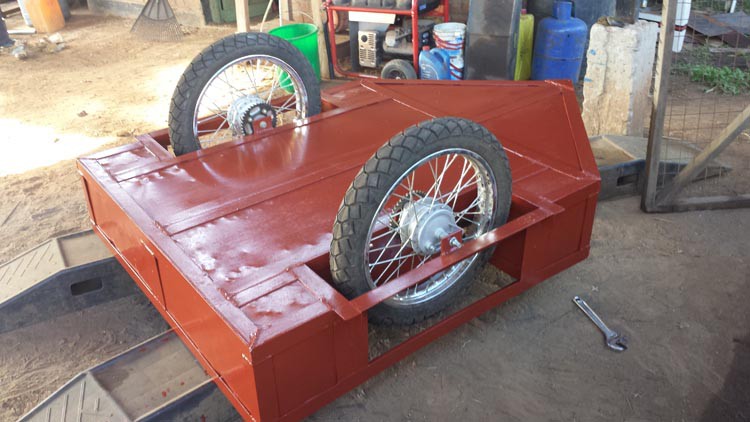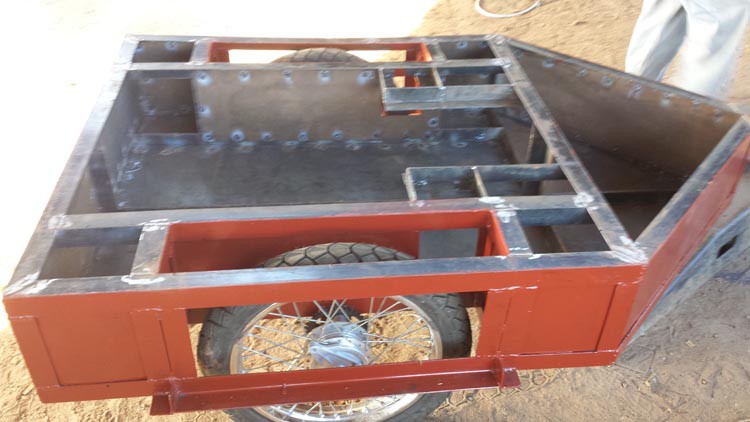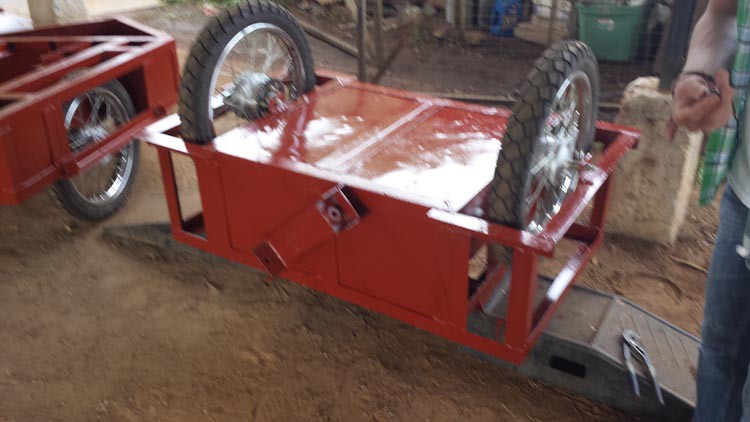It has been really busy out here in South Sudan, so I only get to work on the utility vehicle on random occasions. I am long overdue for an update as things have progressed relatively well. I haven't done a great job of documenting each step, but I will be publishing plans once I work some of the kinks out. Here is a video of where things are now. I currently only have the front two motors hooked up, and I am controlling it from a normal 6 channel rc transmitter. I haven't made any adjustments yet to the stock settings yet, and the controls are very touchy. Steering is all done via differential motor control. The pivot point is just a pinned hinge connection. At the moment I am just using the skid steer setting on the sabertooth to control steering.
I was really impressed with the amount of power, and the gearing ratios seems about right. I am not sure if I can get away with keeping things really simple and running the receiver directly into the sabertooth motor controller like I have now, or if I have problems running a potentiometer at the pivot point to give the angle and creating a pid program that keeps the vehicle tracking properly. I will have to see what happens when I add the rear motors.
I am currently using two 230ah agm batteries that I pulled out a solar bank because they didn't match the other batteries. I think they have been pretty abused, so I don't hold high hopes that these will work well long-term. the only other electrical components at this point are a resettable fuse and a keyed battery disconnect.
I've skinned the frame with 1mm sheet metal and slapped some paint on it. The next major structure will be a dumping bed, and covers over the battery compartment. I am also in the process of sourcing solar panels, which I hope to use to make a solar canopy later on. This will be both for shade/rain as well as charging. I am hoping to get at least 400 watts of panels preferably closer to 600 watts. I think this should be enough for a utility vehicle which spend most of it's time stationary.
I've taken very few photos, but here are a couple from my phone

The underside. The really nice thing about this configuration is that I don't need any axles, which means I get great ground clearance. I actually have better ground clearance than on our land cruiser.

The body panels are just 1mm sheet metal I can buy locally and cheaply. I attached them to the 50x50mm angle with an arc welder. It is too thin to weld from the edge, so I weld a spot about 15mm from the edge. I let the rod burn through then form a puddle which acts like a rivet. It is amazingly strong and very quick.

Poor quality photo, but this show how the two halves are connected. The back is pinned through the holes, which allows for movement in two directions.
 Chris Low
Chris Low
Discussions
Become a Hackaday.io Member
Create an account to leave a comment. Already have an account? Log In.